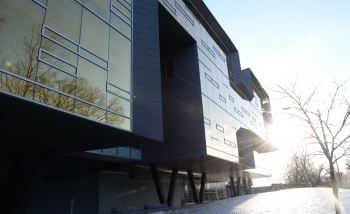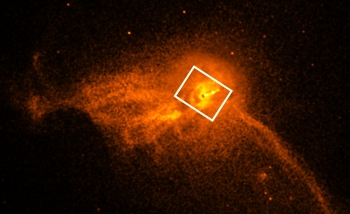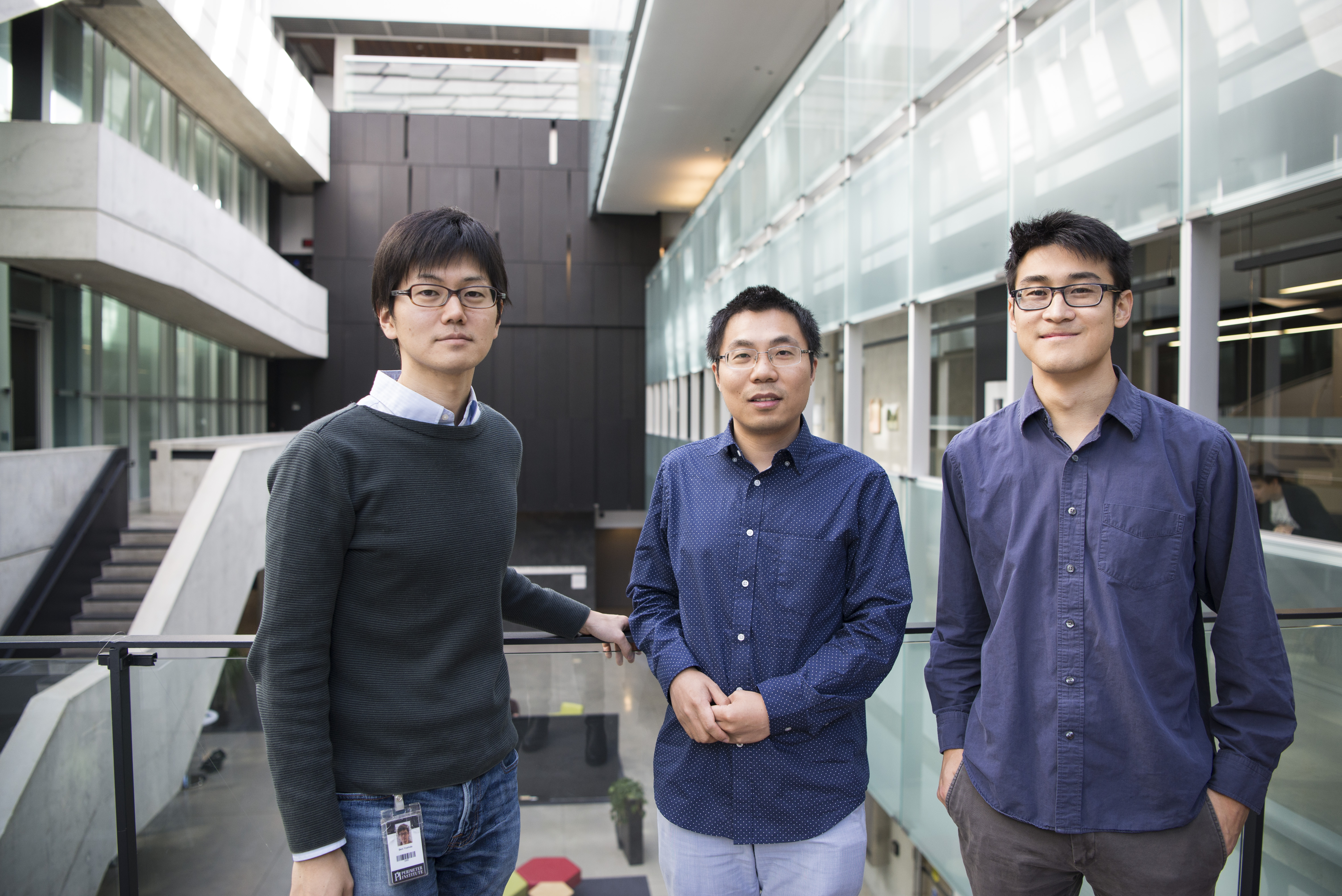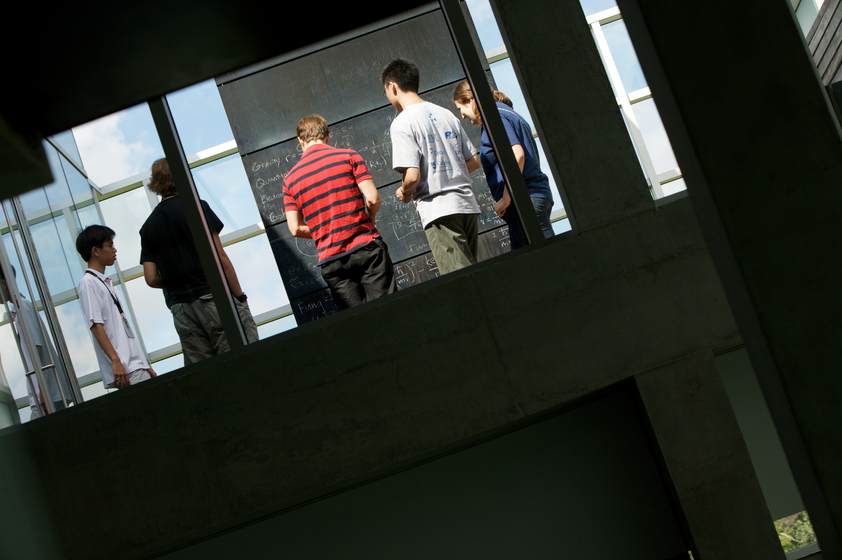DAWN OF MULTI-MESSENGER ASTRONOMY
When the LIGO-Virgo collaboration announced the real-time observation of two colliding neutron stars, Perimeter researchers were ready. Indeed, theorists have long awaited the dawn of “multi-messenger astronomy.”
The combination of electromagnetic and gravitational waves enables us to both watch and hear the universe, says astrophysicist and Perimeter Deputy Faculty Chair Luis Lehner. “It’s opening the door to amazing physics,” he said. “This is all just the beginning – the very first event. To have, in the first event, everything come out like this, it’s just very exciting.”
A NEW CENTRE FOR DISCOVERY
It’s no coincidence that this was also the year that Perimeter launched the Centre for the Universe, a global focal point for research into key questions in cosmology. As Centre patron Stephen Hawking said via video for the launch ceremony: “Cosmology is one of the most exciting fields in science today. We are on the verge of major discoveries about the universe and its origins. I hope and expect many of those discoveries will be made at Perimeter.”
CELEBRATING – AND SUPPORTING – WOMEN IN PHYSICS
Gender equality – or the lack of it – was a major discussion point through 2017, both in science and society. At Perimeter, this broader discussion provided an opportunity to review our efforts to help correct an historical imbalance in the number of women practicing science.
Perimeter continued to push in a number of directions this year: supporting today’s excellent researchers through our Emmy Noether Initiatives, encouraging young women at the start of their science careers, and shining a spotlight on five great women of science with our free, downloadable poster series. There is no single solution to this issue, and more work is needed. Perimeter will continue to expand these efforts in 2018 and beyond.
WINDING UP A YEAR OF “WOW”
It was a momentous year as Canada recognized 150 years since confederation. For Perimeter, the focus was Innovation150, a national celebration of Canadian ingenuity that visited every province and territory. Perimeter led the Innovation150 collaboration with four other science outreach organizations, criss-crossing the country – from mountain passes and ice roads to prairie heat and blazing fall colours – to reach young Canadians where they live with hands-on scientific experiences.
More than 100,000 people attended Perimeter’s “Power of Ideas” events, and many more attended talks, science festivals, a touring museum exhibit, a touring maker space, and experienced Innovation150 online through contests and a digital storybook of Canadian innovations. The unifying goal: to inspire the next generation of homegrown innovators to build a brighter future. Find out more at innovation150.ca.
RECOGNITION OF EXCELLENCE
It was a big year for Perimeter researchers on the awards front. Perimeter cosmologist Kendrick Smith shared science’s richest prize when the WMAP experiment won the 2018 Breakthrough Prize in Fundamental Physics, and Pedro Vieira won the Raymond and Beverly Sackler International Prize in Physics. Many other Perimeter scientists were also recognized for path-breaking research.
Faculty Chair Robert Myers was included in Clarivate Analytics’ annual list of the most influential scientists – for the fourth year in a row. And for the second consecutive year, a Perimeter postdoctoral researcher received a Sofja Kovalevskaja Award from the Alexander von Humboldt Foundation; winner Matteo Smerlak will head to the Max Planck Institute for Mathematics in the Sciences to apply statistical mechanics and mathematics to Darwin’s theory of evolution.
Meanwhile, there were two honours for Perimeter itself. The Institute was commended for its inspiring, healthy, and family-focused environment at the inaugural Employee Recommended Workplace Awards. And the Creative Destruction Lab in Toronto presented Perimeter with an award for its role in training the scientists of the future.
NEW FACULTY WELCOMED TO PERIMETER
Four exceptional researchers were welcomed into the faculty this year. Cosmologist Neal Dalal joined both the faculty and the steering committee for the Centre for the Universe at Perimeter Institute. Beni Yoshida – previously a Perimeter postdoctoral researcher – is already hard at work in quantum condensed matter and quantum information. In 2018, Timothy Hsieh and Yin-Chen He will take up their positions here as well. Together, Yoshida, Hsieh, and He will bring new expertise to efforts to better understand, and one day exploit, quantum effects and condensed matter.
NOT TO MENTION GROUNDBREAKING SCIENCE
Cosmology isn’t a field rife with shake-ups, but Perimeter Director Neil Turok did just that with collaborators at the Albert Einstein Institute. They showed the big bang was not a smooth process, and the decades-old description of the birth of the universe does not hold up to mathematical scrutiny.
PSI Fellow Agata Brańczyk and collaborators devised a new way to reliably generate entangled photons in a scalable material that does not also generate lots of noise. They did it by using techniques from conventional glass optics – potentially opening a new pathway towards creating “quantum light.”
Perimeter Associate Faculty member Maxim Pospelov and former Perimeter postdoc Brian Batell contributed to the long-running effort to define dark matter. Their resulting paper showed, at least, what dark matter is not. “Looking for dark matter in a fairly specific place – yeah, if you find it in that place, that would of course be a super pleasant surprise,” says Pospelov. “That didn’t happen. But it’s a process, right?”
It was also a dynamite year for former Perimeter postdoc Yidun Wan, whose work fuelled two significant experiments: successfully simulating a topological quantum computer that could use an exotic quasiparticle called anyons as bits; and then using an NMR machine to probe topological order as it broke down.
TALKING, WATCHING, AND SHARING SCIENCE
It’s now a year since we launched InsidethePerimeter.ca to share stories, videos, and other cool content about theoretical physics. And what a year! Our “People of PI” series introduced readers to some of the people behind the research, including cosmologist Kendrick Smith, teen whiz Maya Burhanpurkar, and general relativity researcher Luis Lehner. Watch for more in 2018.
We also delivered some deep dives into cutting-edge science, dispatches from the Innovation150 tour in Yellowknife and Nunavut, and a chat with philosopher James Weatherall about physics, finance, and the value of evidence.
Meanwhile, our award-winning “Slice of PI” series was a veritable smorgasbord of fun physics facts. We shared Slices about lasers, neutron stars, the James Webb Telescope, and great wagers in physics history. We upended some common misconceptions in physics and graded Hollywood movies on scientific accuracy. We challenged you with the “So you think you can physics?” quiz. And we finished the year off poetically, with our physics haiku written by researchers, students, and staff of Perimeter.
Still wanting more? Download your free set of “Great Women of Science” posters, created by our in-house art mavens Gabriela Secara and Elizabeth Goheen.
It’s been a stellar year – but if we know anything, it’s that there is plenty more to come in 2018. Until then, happy holidays from all of us at Perimeter!
About PI
Perimeter Institute is the world’s largest research hub devoted to theoretical physics. The independent Institute was founded in 1999 to foster breakthroughs in the fundamental understanding of our universe, from the smallest particles to the entire cosmos. Research at Perimeter is motivated by the understanding that fundamental science advances human knowledge and catalyzes innovation, and that today’s theoretical physics is tomorrow’s technology. Located in the Region of Waterloo, the not-for-profit Institute is a unique public-private endeavour, including the Governments of Ontario and Canada, that enables cutting-edge research, trains the next generation of scientific pioneers, and shares the power of physics through award-winning educational outreach and public engagement.
You might be interested in




